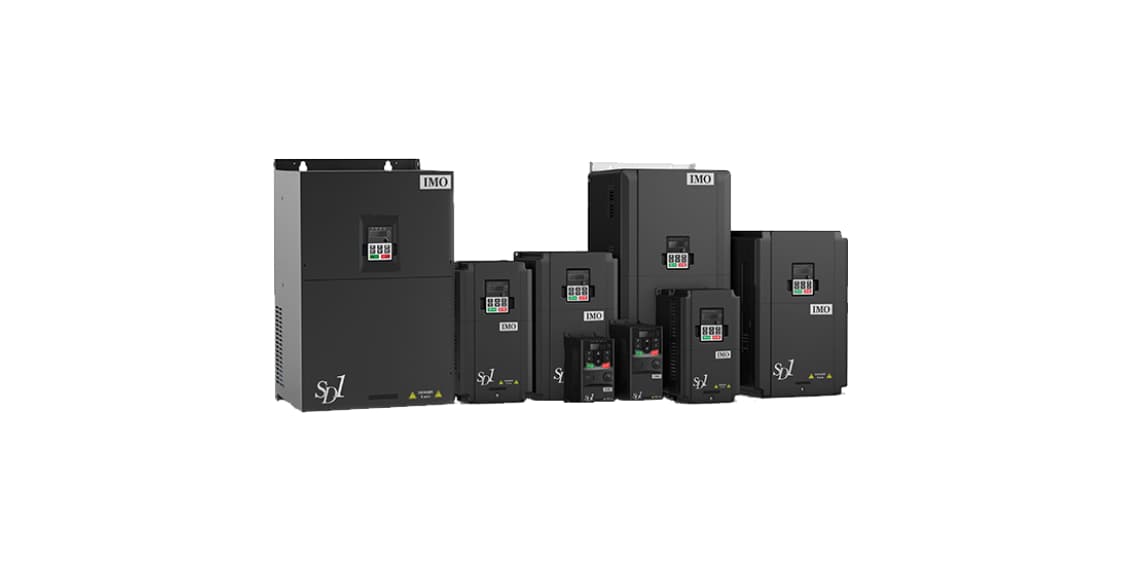We use cookies to make your experience better. To comply with the new e-Privacy directive, we need to ask for your consent to set the cookies. Learn more.
Our top tips for maintaining your Variable Speed Drives

Variable Speed Drives (VSDs) are a crucial part of many factory automation systems, performing a variety of useful roles. For example, they can help to improve energy efficiency, reduce wear on equipment, and enhance control over motor-driven processes. However, just like any useful asset, Variable Speed Drives do need regular care and attention to minimise the risk of downtime, and ensure that they’re consistently performing at their very best. So with that in mind, here are our top tips to help keep your VSDs running smoothly and efficiently!
1. Regularly check for physical wear and tear
Let’s start with the simplest (but arguably still one of the most important) steps – regular visual inspections of the VSD. In fact, it’s a good starting point for any maintenance routine. Components like cooling fans, wiring, and connectors can all degrade over time, especially in industrial environments, which are defined by their intensive nature. Cooling fans can be particularly prone to wear, and damaged or clogged fans can lead to overheating, which may reduce the life of your VSD.
Keep a particular eye out for any signs of damage to wiring, such as fraying, discolouration, or loose connections. Electrical connections that aren’t secure can cause arcing, a dangerous phenomenon which can cause overheating and potential system failures in the best case scenarios, and serious injury or death in the worst cases. It might sound extreme, but it just goes to illustrate how regular checks for wear and tear help catch minor issues before they lead to major problems.
2. Keep the ventilation clean
VSDs rely heavily on efficient cooling to operate within their specified temperature ranges, and they need clean ventilation is vital for this. Over time, dust, dirt, and debris can accumulate in and around the VSD's ventilation system. A blocked airflow causes VSDs to overheat, leading to thermal shutdowns or even permanent damage to the electronics inside.
For that reason alone, make sure to clean vents, cooling fans, and any external air filters on a regular basis. If your VSD is housed in a particularly dusty or dirty environment, increase the frequency of cleaning. In fact, on that note…
3. Don’t forget about wider environmental factors
The environment in which your VSD operates can have a big impact on its longevity and performance. We’ve already discussed how dust can build up inside the VSD, but temperature and humidity also play a role in determining how well it functions, as excessive heat or moisture can reduce efficiency and cause breakdowns.
One way you can minimise the risks is to ensure that your VSD is installed in a location where environmental conditions are controlled as much as possible. If necessary, install protective enclosures, air conditioning, or filtration systems to shield the VSD from harmful environmental factors.
4. Monitor electrical connections
The electrical connections of each VSD will also need to be regularly inspected and maintained to ensure they remain tight and free from corrosion. Loose connections can cause intermittent faults, voltage drops, or overheating, which can lead to unplanned downtime and equipment failure. In more severe cases, electrical arcing can occur, potentially damaging your VSD or other components in the system.
To avoid that, check that all wiring and connectors are securely fastened, and look out for any signs of corrosion – particularly in areas where moisture is present. And of course, re-tighten or replace any components as needed to keep your VSD functioning safely and efficiently.
5. Inspect the cooling system
As we’ve no doubt hammered home enough by now, proper cooling is critical to maintaining your VSD’s performance. Whether the VSD uses an air or liquid cooling system, both need to be inspected regularly to ensure they are working effectively. For air-cooled systems, in addition to cleaning the fans and vents we mentioned earlier, it’s also a good idea to check for any blockages or obstructions in the airflow path. For liquid-cooled systems, inspect for any leaks, proper coolant levels, and potential contamination of the liquid itself.
6. Stick to a preventative maintenance schedule
Everything we’ve covered so far is a relatively minor job, but creating and following a preventative maintenance schedule is one of the best ways to ensure the long-term reliability of your VSDs. Note that it’s different to reactive maintenance, which is essentially the term for responding to equipment failures or breakdowns as and when they happen. This is the more expensive and time-consuming approach, as it’s far more likely to result in downtime while the issue is resolved.
On the other hand, preventative maintenance aims to predict equipment problems ahead of time and take efforts to avoid them, saving time, money, and ultimately improving efficiency. It’s worth setting clear intervals for inspecting key components like fans, electrical connections, and the cooling system, as well as for cleaning and testing the system. Plus, it’s a good idea to keep detailed records of all maintenance performed so that performance trends can be tracked and parts replaced before they fail.
Those are just a couple of the most important elements we’d advise prioritising – and of course, if you ever need any replacement Variable Speed Drives, you’re in exactly the right place. We have more than 20 years of experience here at LED Controls, and we’re the trusted UK distributor of a number of leading brands, including Danfoss, TECO, ABB and IMO – enabling us to supply their drives at truly unbeatable prices.
And of course, if you ever need any help or advice, don’t hesitate to contact our team on 01706 242050. We’re always here to help!









































